How many of us have been coaxed by our mothers and grandmothers to eat all our veggies? They’ve probably even had your family doctor in on their schemes to get us to eat healthy. Now that we’re older, we know they were not wrong. After all, they do come with some major health benefits, don’t they? So, what do these greens consist of? The colour green represents fruits and vegetables that aid in removing potentially carcinogenic compounds from the body, and lowering blood pressure. They are usually rich in vitamins A, C, K, folic acid, potassium, and omega-3 fatty acids. Do you really need another reason to include them in your diet? Here are five must-have leafy vegetables to include:
Spinach (Palak)
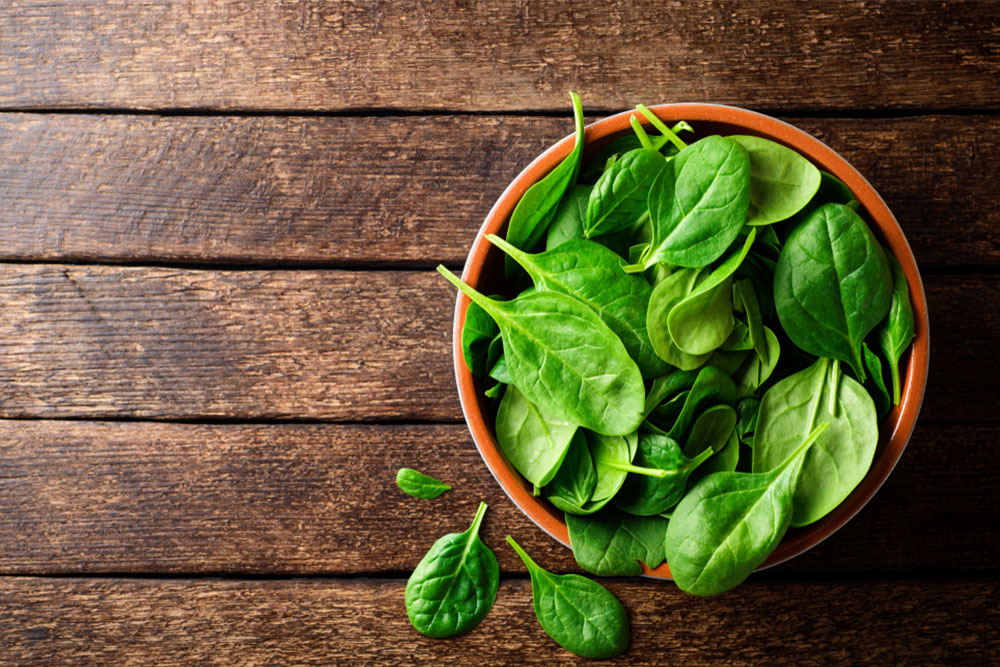
If you’ve grown up in the 80s and 90s, you’re probably familiar with Popeye and his love for spinach. And why not? Spinach has a high fibre content, which aids in digestion. It is also an excellent source of vitamins A, C, K1, B6, B9, and E, folic acid, iron, calcium, potassium, and magnesium. It contains the highest percentage of the plant compound quercetin, which reduces inflammation. Some of the health benefits of spinach are:
• The high potassium content found in spinach helps lower high blood pressure, as potassium reduces the effects of sodium in the body.
• With its share of iron, spinach can prevent the development of anaemia. Iron boosts energy in the body and carries oxygen to all the cells.
• Vitamin A, which is present in spinach is a powerful antioxidant, supports immune function, cell growth, night vision, and overall eye health.
Storage Tip: The first thing to do when you get a bunch of spinach leaves is to pick out the leaves that are tainted or have dried up. Once done, proceed to wash the remaining leaves and dry them thoroughly. They can then be stored in a hard container lined with tissues or paper towels. Alternatively, you could freeze them. This increases their longevity by at least a week to 10 days.
Iceberg Lettuce (Himanshaali Salaad)
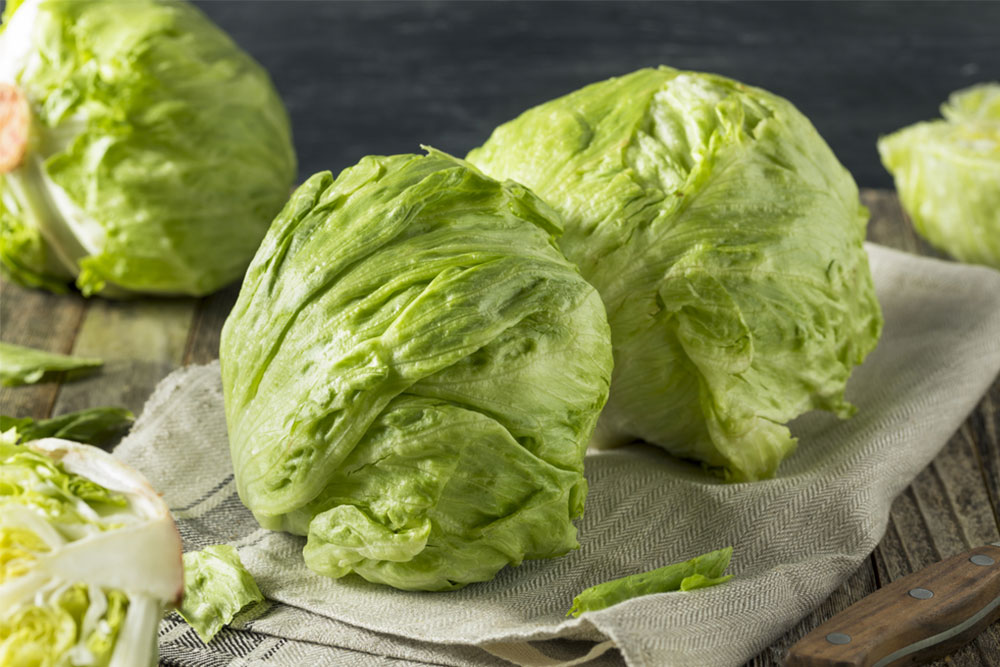
Perhaps the most common variety of lettuce, something you’ll find in almost every salad recipe, the iceberg lettuce is distinct for its lack of taste, which makes it a perfect accompaniment with any food. Although it does not contain fibre, it does have a high water content, making it a refreshing vegetable to consume. What’s more, the nutrients like vitamins C, K, A, calcium, folate, and potassium, that this variant of lettuce is rich in, are great for your health.
• A good source of folate, its intake is encouraged for pregnant women so as to prevent birth defects such as spina bifida (when the baby’s spine and spinal cord don’t form properly) and anencephaly (when the baby is born without parts of the brain and skull).
• Since it has a high water content and is low in calories, consuming a lettuce salad will fill your stomach without adding onto your weight.
• The low carbohydrate content of iceberg lettuce makes it an ideal choice for diabetics because it won't have any significant impact on blood sugar. Loading up on non-starchy veggies can help suppress cravings for unhealthy food choices.
Storage Tip: Choose a head of lettuce which is fresh. You can gauge its freshness by how firm/crisp the leaves are. A very important thing to do is to wash it thoroughly as you don’t want to contract any foodborne illnesses. Once completely dry, you can wrap the lettuce in a kitchen towel, put it in a zip lock bag, and store in the fridge. This ensures that it stays fresh for at least five days.
Arugula (Tara Mira)
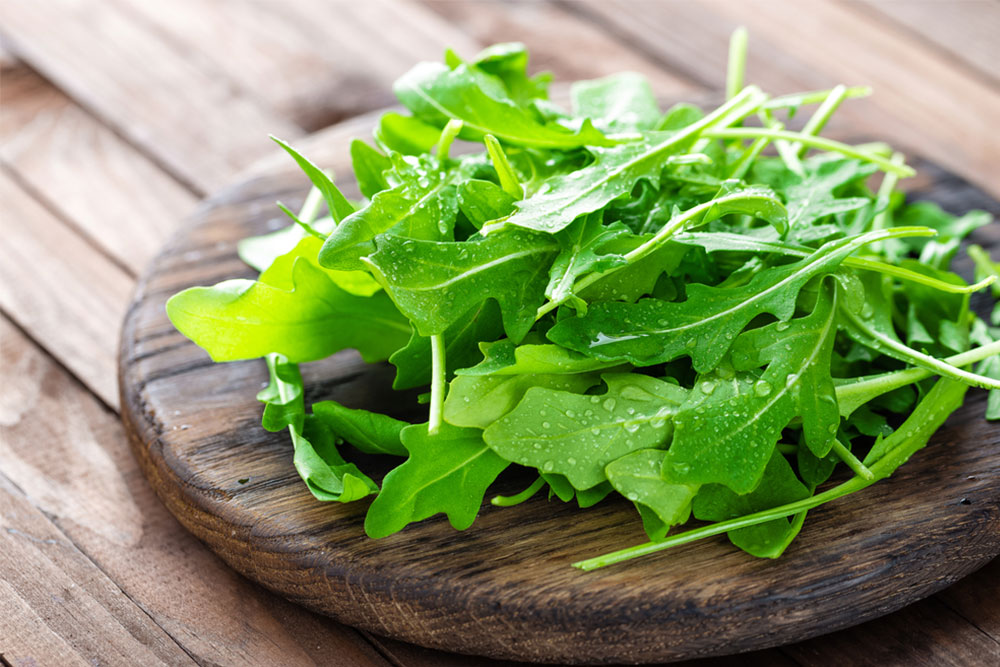
Arugula is a peppery, distinctive-tasting green vegetable that originated in the Mediterranean region. Its popularity has as much to do with its distinctive peppery taste, as its health benefits. It is high in fibre and phytochemicals, low in sugar, calories, carbohydrates, and fat. The other nutrients it contains are calcium, potassium, folate, vitamins K, A, and C. Naturally, this has a host of health benefits:
• The phytochemicals, antioxidants, and essential minerals found in arugula help eliminate toxins in the body.
• Indole-3-carbinol and erucin are anti-inflammatory properties present in arugula. By inhibiting inflammatory enzymes and mediators, it reduces aches and pains associated with such diseases.
• Lutein and zeaxanthin are two antioxidants that are said to help you see better. Vitamin A helps maintain mucus membranes that are essential for normal eyesight.
Storage Tip: Like the other leafy vegetables, you can store arugula in the fridge, wrapped in damp paper towels in a re-sealable bag. This way the arugula stays fresh for up to five days. You could poke holes in the bag as an additional measure to prevent excessive condensation.
Watercress (Shabdkosh)
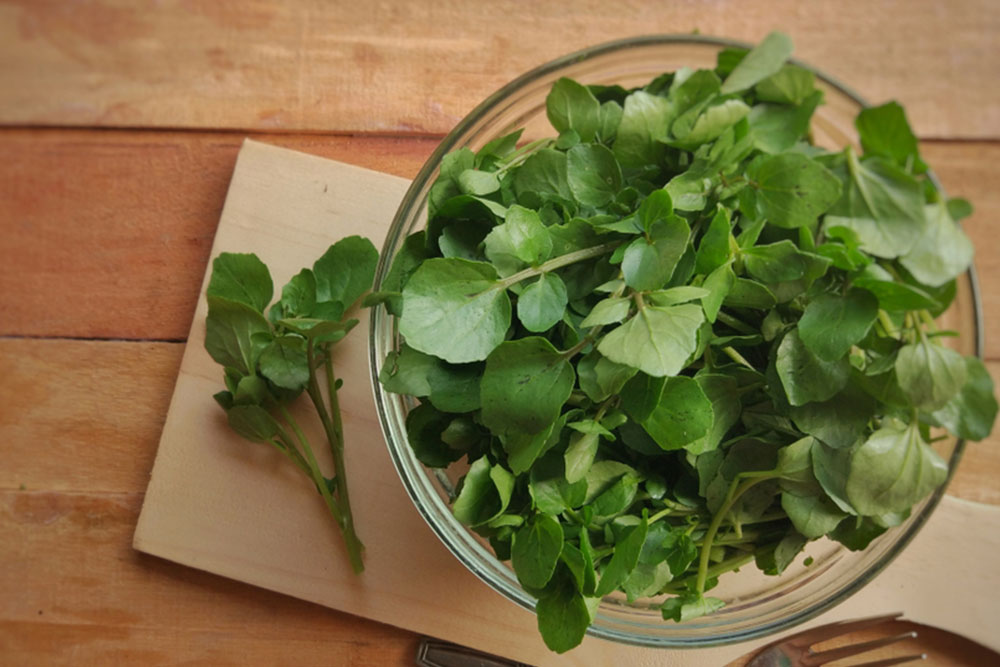
An often overlooked vegetable, watercress is packed with nutrients. Its small leaves, along with the edible stems, have a peppery, slightly spicy taste, and belongs to the family of cruciferous vegetables. It contains protein, carbohydrates, fibre, fat, vitamins A, C, K, calcium, and manganese. Here’s how it can boost your health:
• Due to the high levels of vitamin C present in watercress, it is a powerful antioxidant which keeps your immune system healthy.
• Vitamin K is a component of osteocalcin, a protein which works with calcium to boost bone health.
• It contains dietary nitrates that boost blood vessel health by reducing inflammation and decreasing the stiffness and thickness of the blood vessels.
Storage Tip: Store it in the refrigerator in a deep bowl, upside-down with the stems submerged in cold water and the leafy tops covered with a plastic bag. Drain well before using. This keeps them fresh for about five days.
Fenugreek (Methi)
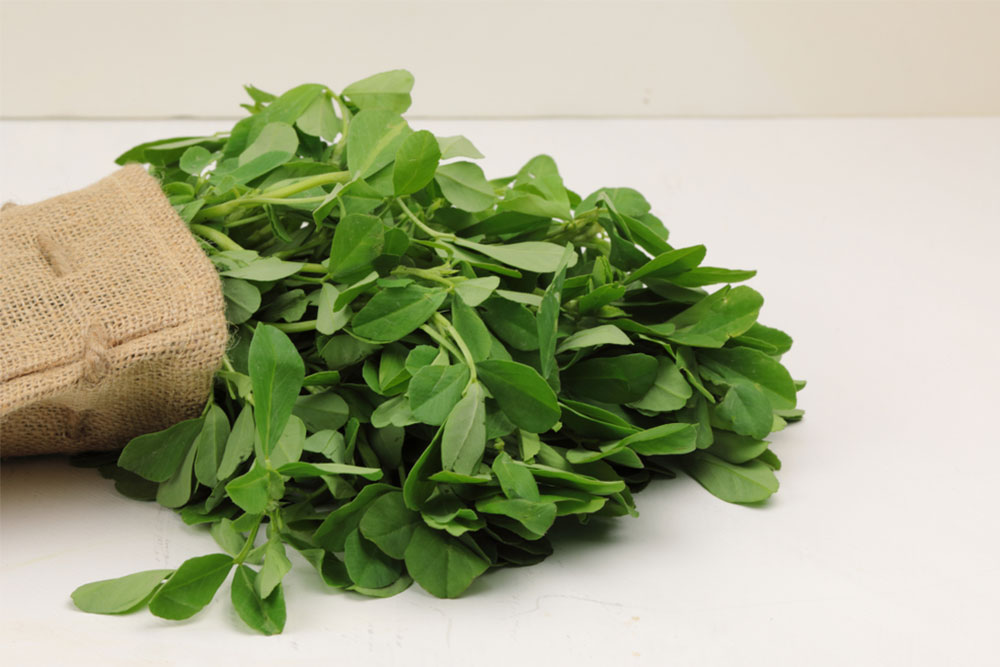
A common ingredient in Indian kitchens, fenugreek leaves play a vital role of improving our health when added to our diet. It contains fibre, protein, carbohydrates, fat, iron, manganese, and magnesium. Its health benefits include:
• It is low in calories but high in soluble fibre, which makes it an ideal vegetable to add to your diet if you are watching your calorie intake. These leaves make you feel satiated for a longer duration and curb your hunger.
• They are loaded with vitamins C and A, along with beta-carotene, the perfect anti-oxidant trio. They build up the body’s immune system and help fight against common illnesses.
• The leaves aid in improving metabolic conditions by increasing the body’s carb tolerance, which in turn, improves insulin function. This is why it is ideal for those suffering from Type 1 and Type 2 diabetes.
Storage Tip: If you choose to, you can store fenugreek leaves for up to 10 months. All you have to do is take the leaves and chop them roughly, no need to wash them. Then, place the chopped leaves on a foil and fold it. Keep it loose enough but ensure that the leaves are covered well. Put the leaves in a Ziploc bag and freeze them. Remember to wash them before use.